Cleaning & Conditioning
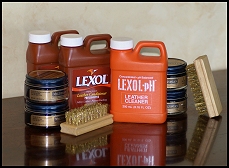
It’s important to know which products can help, and which can hurt.
One of the questions we get asked the most is how to properly clean a Dehner boot. The answer to this question can vary by leather type but there a few key points you always want to keep in mind.
Sometimes the simplest way really IS the best way. Plain tap water is ideal for everyday cleaning and is the easiest on the leather. DO NOT USE SADDLE SOAP! Now we know this may come as a shock to many but despite popular belief, the saddle soap can actually harm your boots.
The following excerpt is taken from an article titled “The Saddle Soap Myth” and it was written by Dr. Herndon Jenkins. It first appeared in the Carriage Journal, Summer 1983 Edition.
Saddle soap is a mixture of oil and soap. The soap’s cleaning effectiveness is diminished by the need to dissolve its own oils, leaving little useful cleaning capacity to remove the dirty oils in the leather itself.
Soaps are inherently alkaline, but alkalinity is damaging to leather. The ability of soap to emulsify oils and release oil-entrapped dirt is inseparable from its alkalinity. Neutralize a soap solution and it becomes ineffective as a cleaning agent.
Most saddle soaps call for the user to work the lather into the leather but, since the dirt which has been loosened is suspended in the lather, it is pushed back into the leather and into the pores.
After so many years in the business, The Dehner Company has seen first-hand how continued use of such saddle soaps can actually decrease the life of a boot. A damp cloth with plain tap water should always be your first choice but if something more is needed or you have a really tough stain, try to find a pH-balanced cleaner and conditioner such as Lexol.
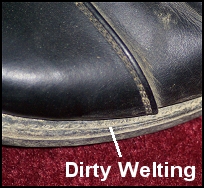
A dirty welt can eat away at the stitching of your sole. Clean this area often.
Lexol, and other cleaners like it, have a pH-balanced formula which helps you avoid the damaging effects of alkaline-based soaps. Use these cleaners for the tough dirt and grime, but as with any chemical, use it sparingly and ALWAYS follow your cleaning with a conditioning. Most brands such as Lexol will also make a conditioning product as well. Conditioning helps replace the “good oils” that keep your boot breathing and soft.
Although your boots need oil to stay healthy, avoid over conditioning them. Adding too much of a good thing can saturate the boot and cause it to become oily to the touch. Always follow the instructions on the conditioner label.
Washing the welt area of the boot can be a bit tougher and a soft bristled brush may be required. Gently work the brush around the welt area to loosen the dried-in dirt and oil then wipe dry with a soft cloth.
One other important thing to note is how much boot trees can preserve the overall shape of the boot. This is especially true once the leather has gotten damp. Even a plastic tree can make a world of difference and help keep your Dehners looking great for years.


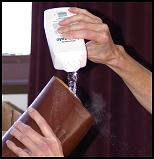


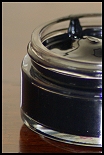 Creams & Polishes
Creams & Polishes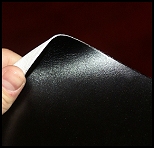 What About Dehcord?
What About Dehcord?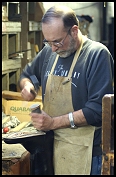 Repairs & Adjustments
Repairs & Adjustments